Discovering a vibrant crayon masterpiece on your favorite fabric can be a colorful surprise, but it’s not the kind of artwork you want to display.
Fear not, whether it’s your child’s accidental doodles on the sofa or a stray crayon in the dryer causing a rainbow-hued disaster!
With the right techniques and a little patience, you can bid those stubborn crayon stains farewell and restore your fabrics to their former glory.
In this guide, we’ll walk you through the most effective methods for how to get crayons out of fabric, from cotton and polyester to delicate silk.
We’ll also share some valuable tips on tackling fresh and set-in stains so you can confidently tackle your crayon-related conundrums.
So, roll up your sleeves, gather your supplies, and start the colorful journey to a crayon-free fabric world!
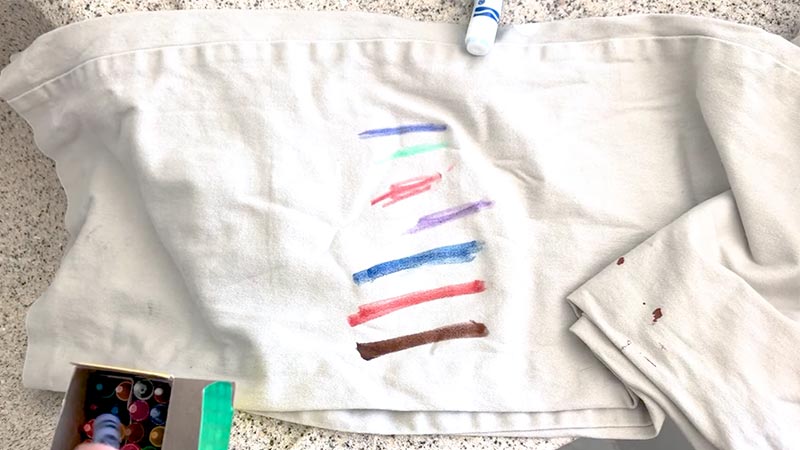
How to Get Crayon Out of Fabric? 7 Methods
Removing crayon stains from fabric can be daunting, but with the right techniques and a little patience, you can salvage your favorite textiles. Let’s explore several methods to remove crayon stains from fabric, step by step effectively.
Method 1: Scrape Off Excess Crayon
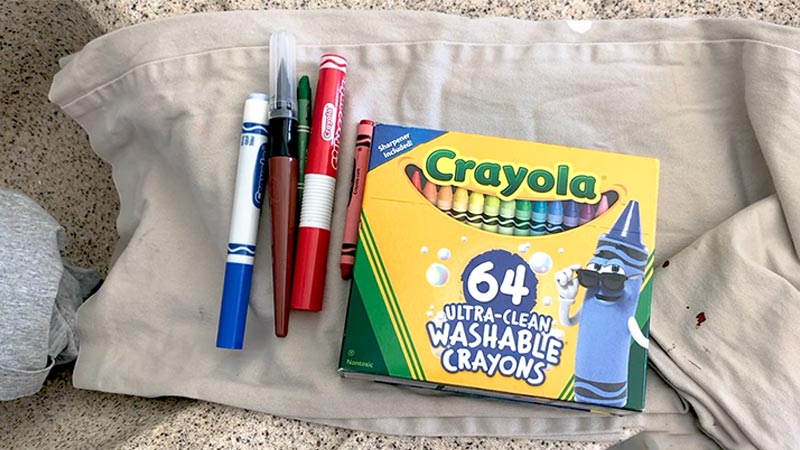
Before treating the stain, removing any excess crayon wax is essential. Follow these steps: Place the fabric on a clean, flat surface. Use a butter knife or plastic scraper to scrape off as much crayon as possible gently. Be careful not to damage the fabric.
Method 2: Blot with Paper Towels
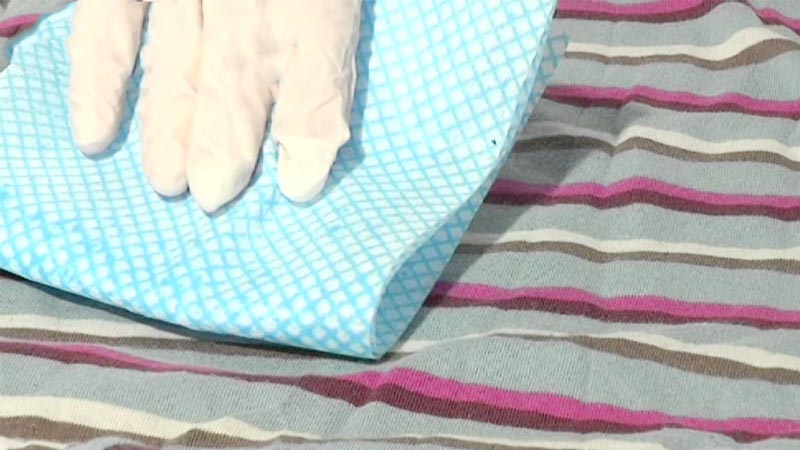
Now, let’s work on the remaining crayon stains: Lay a white paper towel or brown paper bag over the stained area on both sides of the fabric. This helps absorb some of the crayon wax. Set your iron to a low heat setting with no steam.
Gently press the iron over the paper towel on top of the stained area. The heat will melt the crayon wax, and the paper towel will absorb it.
Replace the paper towel or bag frequently to avoid spreading the crayon. Continue this process until you’ve removed as much crayon as possible.
Method 3: Apply Dish Soap and Warm Water
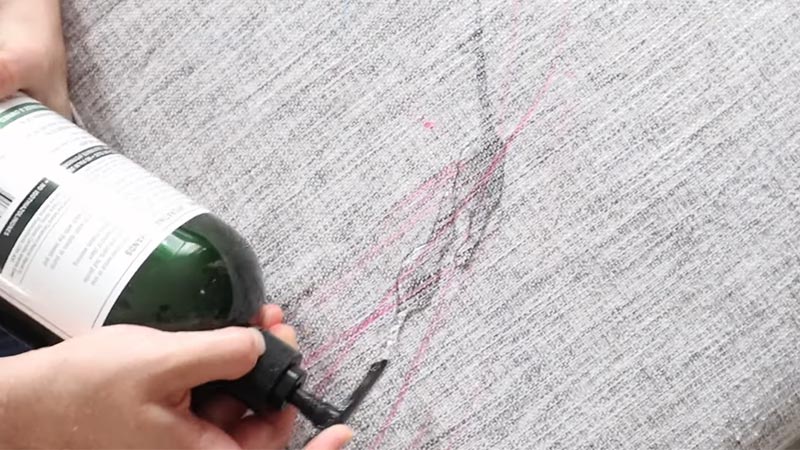
We’ll use mild liquid dish soap for this method: Fill a basin or sink with warm water. Add a few drops of mild liquid dish soap and mix it until it forms a soapy solution. Submerge the stained fabric in the soapy water and let it soak for 15-30 minutes.
Gently rub the stained area with your fingers or an old toothbrush. Be careful not to scrub too vigorously, which may damage delicate fabrics. Rinse the fabric thoroughly with clean, cold water.
Method 4: Use Baking Soda Paste

Baking soda is excellent for lifting crayon stains from fabric. Make a paste by mixing baking soda with a small amount of water. Aim for a thick, paste-like consistency. Apply the baking soda paste directly to the crayon stain.
Gently rub the paste into the fabric using your fingers or an old toothbrush. Allow the paste to sit on the stain for about 15-20 minutes. Rinse the fabric thoroughly with cold water.
Method 5: Try WD-40 (For Stubborn Stains)
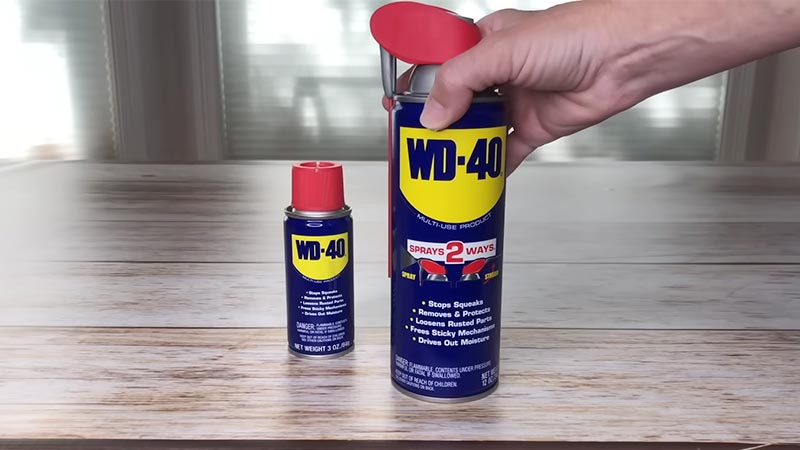
If the crayon stain persists, you can try using WD-40, but exercise caution, especially with colored fabrics: Spray a small amount of WD-40 onto the crayon stain. Let it sit for a few minutes, but don’t let it sit too long to avoid potential damage to the fabric.
Blot the area with a clean white paper towel or cloth to lift the crayon stain. Wash the fabric with warm, soapy water and rinse thoroughly.
Method 6: Apply Rubbing Alcohol
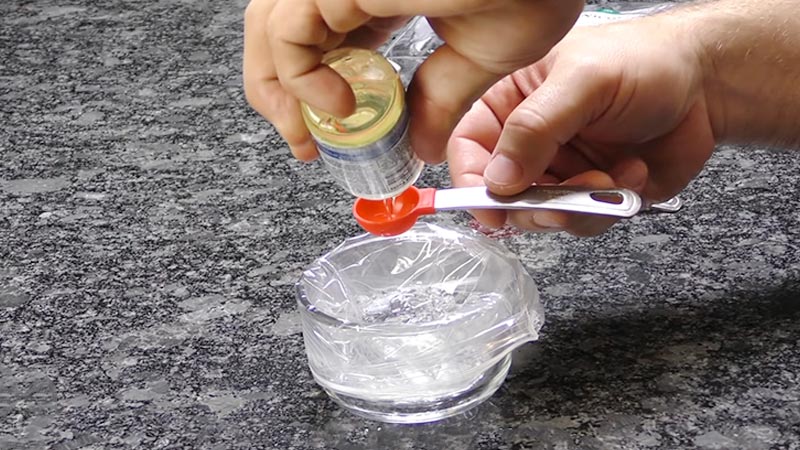
Rubbing alcohol can also effectively remove crayon stains. Dampen a white paper towel or cloth with rubbing alcohol. Blot the stained area gently. Avoid rubbing, as this can push the crayon further into the fabric.
You should see the crayon transferring onto the paper towel or cloth as you blot. Replace the paper towel or cloth as needed. Once most of the crayon is removed, wash the fabric with warm, soapy water and rinse thoroughly.
Method 7: Launder with Laundry Detergent
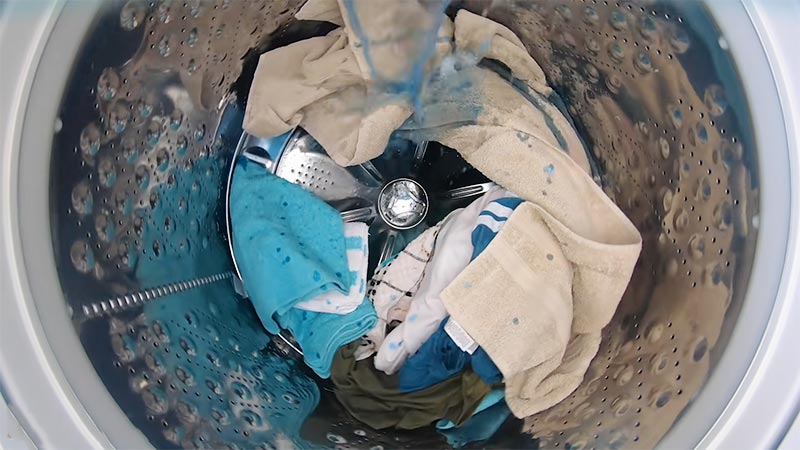
After using any of the above methods, wash the fabric as you normally would with your regular laundry detergent.
Use the warmest water temperature recommended for the fabric type. Check the stain before drying; repeat the stain-removal process if it’s still visible.
Additional Tips
Always check the fabric care label for specific cleaning instructions before removing any stain. Avoid using hot water or high heat settings on the dryer until the crayon stain is completely gone, as heat can set the stain.
You can use hydrogen peroxide (3%) for white fabrics to remove crayon stains. Apply it directly to the stain, let it sit for a few minutes, and then wash as usual.
Remember that patience and persistence are key when dealing with crayon stains. Removing the stain completely may take a few attempts, especially if it’s set in or the fabric is delicate.
Materials You’ll Need For Getting Crayon Out Of Fabric
Here’s a table listing the materials you’ll need for getting crayons out of fabric:
| Material | Description |
| Butter knife or spoon | Scrub and agitate the stain gently. |
| Paper towels | To blot and remove excess crayon residue. |
| White vinegar | A common household item for stain removal. |
| Liquid dish soap | Helps break down crayon wax and stains. |
| Warm water | Used for mixing with vinegar and dish soap. |
| Old toothbrush | Optional for tougher stains. |
| Washcloth or sponge | For applying the cleaning solution and scrubbing. |
| OxiClean or stain remover | Optional, for tougher stains. |
| Laundry detergent | For washing the fabric after stain removal. |
| Iron and paper towels | It can help absorb residual oil or color. |
| Baking soda (optional) | Can help absorb residual oil or color. |
Please note that the effectiveness of these materials may vary depending on the fabric type and the crayon stain’s age. Always check the fabric’s care label and perform a spot test before applying any cleaning solution to ensure it won’t cause damage or discoloration.
How to Prevent Crayon Stains?
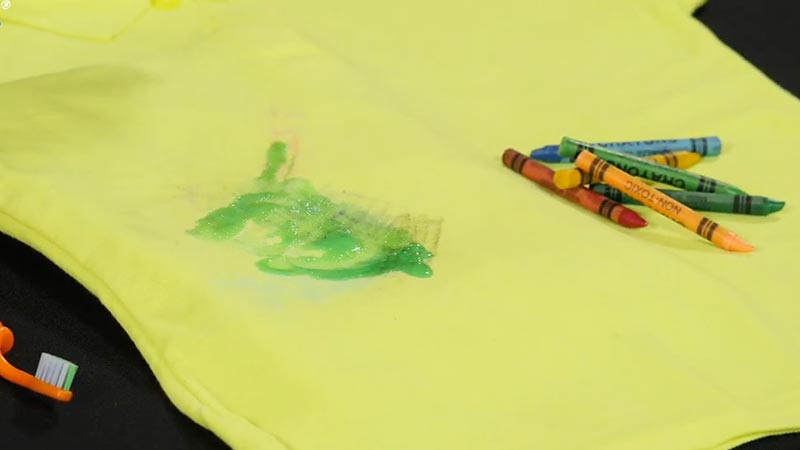
Preventing crayon stains from happening in the first place is a proactive approach that can save you time and effort. Whether you have young artists at home or want to avoid crayon mishaps, here are some practical tips to prevent crayon stains:
Supervise and Educate
When young children are coloring with crayons, always supervise their activities to ensure they stay on paper and don’t stray onto fabrics or surfaces. Teach kids the importance of coloring on designated surfaces and using placemats or coloring books.
Create Designated Coloring Areas
Designate specific areas for coloring activities, such as a table with a protective cover or a playroom with washable floors. Keep crayons and art supplies in these designated areas to minimize the chance of crayons ending up on fabrics.
Use Washable Crayons
Opt for washable crayons when possible. These crayons are designed to come out of fabrics more easily during laundry. Check the packaging to ensure you’re using washable crayons.
Invest in Aprons or Smocks
If you or your child is prone to getting crayon marks on clothing, consider using aprons or smocks during coloring activities. These protective garments can shield clothing from accidental crayon mishaps.
Provide Clear Rules
Establish clear rules with children about where and when crayon activities are allowed. Make sure they understand the consequences of coloring on non-designated surfaces.
Be Mindful of Furniture and Upholstery
Keep crayon activities away from upholstered furniture to prevent accidental marks. It’s easier to prevent crayon stains than to remove them. Use washable, machine-washable slipcovers on furniture if possible.
Regularly Check and Clean Coloring Supplies
Inspect crayons and coloring supplies for broken or worn pieces. Discard damaged crayons to prevent them from making unexpected marks. Clean and organize coloring supplies regularly to prevent stray crayons from ending up where they shouldn’t.
Store Crayons Properly
Use containers or storage solutions specifically designed for crayons to keep them organized and contained. Store crayons out of reach of young children when not in use.
When working on craft projects or coloring activities on a table, cover the table with a washable tablecloth or craft paper to catch any stray marks.
Immediate Action for Accidents
Accidents can happen despite precautions. If a crayon does end up on the fabric, act quickly to remove it following the stain removal methods mentioned earlier.
Create Art-Specific Spaces
If you have a dedicated art or craft room, controlling and containing crayon activities is easier. This allows you to create a space where creativity can flourish without the risk of crayon stains elsewhere in the house.
If weather permits, consider supervised outdoor coloring sessions where crayon marks can easily be cleaned from outdoor furniture or surfaces.
Check Pockets Before Washing
Before doing laundry, always check your pockets for crayons. Accidentally washing crayons with clothing can lead to a melted mess.
As children grow, teach them responsible art practices, including cleaning up after themselves, organizing art supplies, and properly disposing of crayon scraps.
Consider Digital Alternatives
In the age of technology, consider introducing digital coloring apps and games that can provide hours of creative entertainment without the risk of crayon stains.
By implementing these preventive measures and fostering responsible coloring habits, you can significantly reduce the chances of crayon stains on your fabrics and surfaces.
Remember that a combination of supervision, education, and preparedness ensures that crayon mishaps are kept to a minimum, leaving your textiles and home crayon-free.
FAQs
Can crayon stains be removed from dry-clean-only fabrics?
Removing crayon stains from dry-clean-only fabrics can be challenging. However, you can try blotting the stain gently with a paper towel, then consult a professional dry cleaner for assistance.
Are there any alternative methods for removing crayon stains from fabrics?
Yes, there are alternative methods. Some people have successfully used a mixture of equal parts vinegar and baking soda to create a paste. Apply the paste to the stain, let it sit, and then rinse and launder as usual.
Can I use a hairdryer instead of an iron to remove crayon stains from fabric?
While a hairdryer can soften crayon wax, it may not be as effective as an iron. The heat from an iron helps transfer the melted crayon onto paper towels, making it easier to remove.
If you don’t have an iron, you can try a hairdryer, but be cautious not to overheat the fabric.
If I skip the pre-treatment steps, will crayon stains come out in the wash?
Crayon stains may not come out in the wash if you skip pre-treatment. Crayon wax can melt in the dryer’s heat and set the stain further into the fabric. Addressing the stain before washing is crucial to maximize the chances of complete removal.
What should I do if I discover a crayon stain on clothing after it’s been through the dryer?
If you find a crayon stain on clothing after it has been through the dryer, it can be more challenging to remove. Try the earlier methods, like using an iron and paper towels to soften and lift the crayon.
Conclusion
There you have it, saying goodbye to those pesky crayon stains! With the methods and tips outlined in this guide, you’re armed with the knowledge to rescue your fabrics from colorful mishaps.
Remember to act swiftly for fresh stains, gently scrape off excess crayons, and choose the appropriate stain-removal method based on the fabric type. Crayon artistry might be delightful on paper, but it doesn’t belong on your upholstery or clothing.
By following these steps and being patient and persistent, you can restore your fabrics to their pristine state. Just imagine the relief of not explaining those rainbow streaks to your guests.
With the power of knowledge, a few common household items, and some elbow grease, you can triumph over crayon mishaps and keep your fabrics looking their best. So tackle those crayon stains like a pro and enjoy your freshly rejuvenated textiles!
Leave a Reply